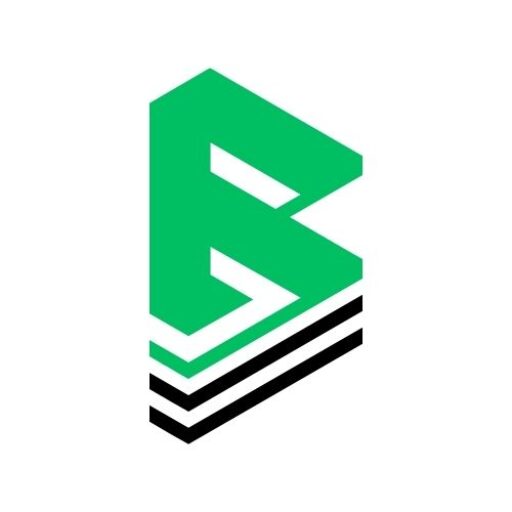UPI Payment Limit 2024: The National Payments Corporation of India(NPCI) developed the Unified Payment Interface(UPI). UPI allows real-time transfers between personnel accounts, banks and merchant accounts via mobile devices. It also facilitates immediate bank-to-bank payments, making online payments convenient and easy. It is the most preferred payment system in India. Today, we are discussing with you the UPI Payment Limit 2024 details. We have provided you with the latest announcement of RBI in this article related to the UPI Payment Limit 2024 by using upi.
Reserve Bank of India has increased the limit of transactions by using UPI for citizens. Users were able to pay lakh rupees by using upi earlier. But now users can pay up to 5 lakh rupees in hospitals and Educational institutes according to the guidelines of RBI. However apart from the hospitals and Educational Institute, the limit to pay by using UPI will remain 1 lakh.
UPI Payment Limit 2024
UPI transaction limit per day is set at Rs 1 lakh, according to the NPCI, the RBI-regulated entity that created UPI. However, the maximum UPI Payment Limit 2024 may change from bank to bank.
UPI Payment Limit 2024 can be categorized as:-
- Limit of the transaction amount, that is, the maximum amount of money that can be transferred via UPI.
- Frequency, i.e. the number of UPI transactions a person can make in a day.
UPI transaction limit per day
As per NPCI, the UPI transactions limit for normal UPI transactions is ₹1 lakh per day. Furthermore, NCPI allows a maximum of 20 UPI transactions per day. The maximum UPI Payment Limit 2024 can vary from bank to bank, ranges between Rs.25,000 and Rs.1 lakh.
As of April 2024, UPI transactions related to capital markets, collections, insurance, and foreign inbound remittances have a limit of ₹2 Lakh per day. UPI limit of ₹5 lakh is applicable for payments to educational institutions and healthcare effective 10th January 2024, provided they are “Verified Merchants”
Additionally, For IPOs and retail direct schemes, the UPI Payment Limit 2024 per transaction or per day is also Rs 5 Lakh. If you want to transfer more money or conduct a larger number of transactions, you will have to wait for the 24 hour time period to get over.
IGNOU Entrance Result 2025: Check B.Ed, PhD & B.Sc Nursing Result Dates, Scorecard, @ignou.ac.in
Rs 2 lakh limit for UPI
However, the maximum amount that can be transacted by using UPI remains at 1 lakh. but there are a few categories where users can spend up to a Maximum of 2 lakh Rupees from the UPI. users can invest in mutual funds, brocking, and AMC for up to Rs 2 lakh from UPI. Apart from this if you are involved in any loan or credit loan then you can pay the bill or rep payment your loan amount for the maximum of 2 lakh Rupees from the upi.
However, it was announced by the RBI in December 2021 and applicants are using the benefits of this scheme from 2021. And now RBI has increased the limit of UPI transactions for the payment in hospitals and Educational Institutes also into 2024.
RBI guidelines for e-mandates
Right now, there’s a rule that says electronic mandates (e-mandates) can be used for transactions up to Rs 15,000 without extra verification. A lot of people, around 8.5 crore, have signed up for these e-mandates, and they’re handling transactions totaling nearly Rs 2,800 crore every month.
Although the system is working well, there’s a suggestion from the RBI to increase the limit, especially for things like subscribing to mutual funds, paying insurance premiums, and settling credit card bills. This is because in these categories, the transactions are often more than Rs 15,000, and not many people are using this method. The RBI believes that raising the limit could encourage more people to use e-mandates in these areas.
Key Points in RBI Meeting
To help banks manage their funds better, the RBI has decided that starting from December 30, 2023, banks can now get back the money they deposited or repay the money they borrowed from the RBI, even on weekends and holidays. This applies to two facilities called the Standing Deposit Facility (SDF) and the Marginal Standing Facility (MSF).
The Standing Deposit Facility (SDF) was introduced in 2018, and it’s a way for banks to manage extra money without having to give anything as security. The Marginal Standing Facility (MSF) is like a backup plan for banks – they can borrow money from the RBI in emergencies when there’s not enough money flowing between banks. Currently, banks can use these facilities from 5:30 pm to 11:59 pm every day, including weekends and holidays.
But if they want to take back the money they deposited or repay the money they borrowed during the weekends and holidays, they have to wait until the next working day in Mumbai. Now, with the new announcement, they can do these transactions even on weekends and holidays.
UPI transaction payment charges as per new guidelines
An interconnection fee is the transaction fee a merchant must pay when a customer processes a transaction. As an example, if a customer makes a payment via UPI using a G-Pay QR code at a store, the merchant should pay the interchange fee to the payment service provider, i.e. Google Pay.
Customers do not have to pay any interchange fees for UPI payments made via PPIs for Peer to Peer (P2P) and Peer to Merchant (P2M) transactions. P2P transactions means transferring an amount between two individuals or individual accounts via UPI. P2M is where customers make payments via UPI to merchants for purchases.
As per the 2024 NCPI guidelines, a merchant has to pay an interchange fees of up to 1.1% of the transaction amount on UPI transactions above Rs.2000. These charges are applicable for transactions made via prepaid payment instruments (PPI) like wallets, Amazon Pay, Google Pay, Phonepe, etc.
The interchange fee will be borne by the merchant’s bank (the receiver of the payment) to the payer’s bank (the sender of the payment) to cover the costs of processing and authorizing the transactions.
Top Banks UPI Payment Limit 2024
The basic UPI limit per day and number of transaction limitations set by NPCI are common, that is, Rs 1,00,000 in a day or up to a maximum of 20 transactions. However, banks may have individual UPI Payment Limit 2024.
Here are the details of some of the most common banks and their UPI Payment Limit 2024:
| Bank Name | UPI Daily Payment Limit 2024 | UPI Payment Limit 2024 |
| SBI | Rs. 1,00,000 | Rs. 1,00,000 |
| PNB | Rs. 50,000 | Rs. 25,000 |
| IDFC | Rs. 1,00,000 | Rs. 25,000 |
| Allahabad Bank | Rs. 1,00,000 | Rs. 50,000 |
| Bank of India | Rs. 1,00,000 | Rs. 10,000 |
| Indian Overseas Bank | Rs. 1,00,000 | Rs. 50,000 |

